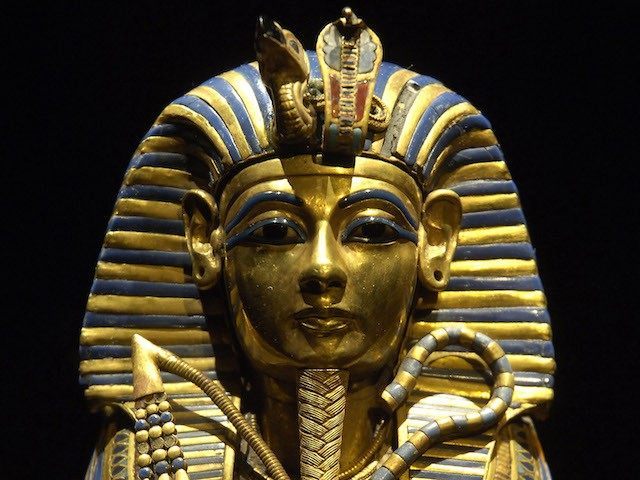Egyptologist Nicholas Reeves is leading the hunt for what may very well be the final resting place of Queen Nefertiti.
3,300 years later, we’re still discovering new information about the most infamous of Egypt’s monarchs. Tutankhamen — or “King Tut” — was only found entombed in the Valley of Kings by Howard Carter in 1922. Now Reeves, an archaeologist out of the University of Arizona, is finally getting traction on a theory he’s been actively pursuing since August.
In early 2014, Spanish art-replication experts Factum Arte were taking high definition color photos of the tomb’s walls, in order to provide tourists and history buffs with a way to view them without the potential for destruction of the site posed by allowing the public into the chamber itself.
Alongside the photos, scans of the walls were released that revealed they had been painted so thoroughly that — according to Reeves — the underlying architecture was “almost wholly obscured.” Reeves’ interest was ignited over the course of several months spent studying these scans. Until very recently, experts had believed that nothing but bedrock lay behind those walls.
The images revealed cracks and fissures beneath the layers of paint, which suggested to him that other chambers might exist, blocked off and plastered to purposefully conceal their existence. Reeves’ initial report was met with skepticism among his colleagues; after all, the burial place of Queen Nefertiti has been a sort of “white whale” among Egyptologists in the decades following the discovery of Tut’s tomb.
While one of the theorized passages was likely no more than an ancillary store room much like other previously uncovered passages, the other seemed to suggest something very different. The door itself would be just as large as the entrance to the undersized tomb of the boy king. Since it proceeds along the same axis as the previously discovered chambers, Reeves posited that it may lead to the resting place of another important historic figure.
Tut’s chamber has long been considered far too small for a king. Some have even speculated that it was a private tomb enlarged for his use. Reeves suggested that it was instead the “outermost portion of an extended, corridor-style ‘tomb-within-a-tomb.” Without radar scans, however, Reeves’ ideas have been almost impossible to verify.
The resting place of Queen Nefertiti has become a legendary mystery. As the wife of Tutankhamen’s father Akhenaten, Nefertiti is believed to have served not only as a co-regent, but a Pharaoh in her own right after Akhenaten’s death.
If that’s true, her tomb may have been even more elaborate than her step-son’s. In fact, the haphazard placement and strangely second-hand nature of King Tut’s treasures might even indicate that many of the artifacts discovered in his tomb were actually meant for the late queen.
Late this summer, Nicholas Reeves published a paper detailing his theory: that the covered passage may, in fact, be the lost burial chamber of the Egyptian Queen. In September, Egyptian authorities finally gave Reeves permission to pursue his ideas in earnest.
The radar scans began on Thanksgiving — and, after two nights of tests, the evidence has begun to mount. There are clear indications that passages exist beyond the Tut’s burial chamber, and many have begun to believe that we are approaching a pivotal point in archaeological discovery. Researchers in Egypt are now, in fact, “90 per cent sure” that hidden chambers exist.
Nate Church is @Get2Church on Twitter, and he can’t become a wildly overhyped internet celebrity without your help. Follow, then retweet and favorite everything he says. It’s the Right Thing To Do™!

COMMENTS
Please let us know if you're having issues with commenting.